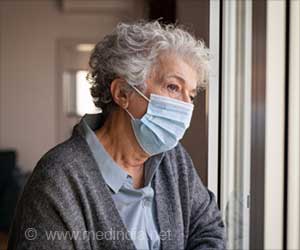People who lead an active lifestyle have less severe long-COVID-19 symptoms, including fatigue, compared to those who are sedentary.
- Long-COVID is a type of disease that occurs after the acute phase of COVID-19 and can have persistent symptoms for months
- A recent study investigated how physical activity affected sleep, fatigue, and cognitive changes in individuals with long-COVID
- The study found that physically active individuals had a lower perception of fatigue after one year of acute COVID-19 infection compared to sedentary individuals
Understanding Long-COVID-19: Symptoms and Impacts on Physical Activity
Notably, long-COVID-19 did not start before comorbidities such as diabetes, cancer, obesity, and cardiovascular disease, which are connected to greater COVID-19 severity. The majority of COVID-19 patients report having ongoing weariness, dyspnea, joint pain, and chest pain after leaving the hospital, according to a recent Italian study. The most enduring and frequent Long-COVID symptoms were fatigue, sleep disruption, dyspnea, and myalgia, according to a meta-analysis of 250,000 people.According to the results of various research, weariness is the Long-COVID symptom that is most frequently mentioned. Therefore, persons who were regularly monitored for physical performance, such as military personnel and professional athletes, were thought to be the best candidates for long-COVID-19 studies. Treatments for long-COVID may be developed using the data from these groups.
chronic fatigue syndrome, also known as myalgic encephalomyelitis (ME/CFS), is a complicated multisystem condition that results in cognitive impairment, orthostatic intolerance, and nonrestorative sleep. Being unable to do simple exercises is a common sign of ME/CFS. Long-COVID and ME/CFS share some symptoms, including chronic fatigue.
Impact of Physical Activity on Long-COVID
In a recent study published in the Diagnostics journal, it was determined how physical activity affected sleep, fatigue, and cognitive changes in those with long-COVID. This study looks at how long-COVID impacts people differently depending on whether they lead active or sedentary lives.506 individuals in all, 138 of them women, were recruited. Due to the Dolomites mountain range's proximity, skiing is popular among competitors. Before obtaining COVID-19 infection, all individuals led active lifestyles and performed an incremental stress test.
Four groups of participants were created: competitive cross-country skiers (AA), mountain amateurs (MA), ski instructors (SI), and inactive individuals. (SP). Those who were a part of the SP group were regarded as the control group. Six months after the COVID-19-positive period ended, all individuals reported continuing muscle weariness.
A young group with a uniform lifestyle, including above-average physical activity and long-COVID symptoms, made up the current study cohort. (muscle fatigue). Importantly, earlier studies have noted this long-COVID symptom in young patients, including those with children and adolescents. The amount of TnC in the blood is a key biomarker associated with training load.
Implications for Long-COVID Management: Insights from a Physical Activity Study
In this study, a Rating of weariness (ROF) scale was employed, with 1 representing minimal weariness and 10 representing maximal fatigue. No of their gender or test category, participants' perceptions of exhaustion at the end of the acute phase of COVID-19 were high, scoring an 8 on the ROF scale. According to a prior study, the study participants experienced anxiety, exhaustion or weakness in their muscles, trouble sleeping, and sadness six months after the acute COVID-19 infection phase ended. This conclusion is consistent with the study's findings.A different observation was made after one year of acute COVID-19 infection, where the AA, SI, and MA groups with higher motor efficiency indicated a ROF score near 2. The sedentary group, on the other hand, displayed a ROF value that was roughly twice as high. These results suggest that prevalent long-COVID symptoms were less frequent in people who led an active lifestyle.
The current study found that six months after the end of the acute SARS-CoV-2 infection phase, a subset of subjects, regardless of gender, displayed a very high rate of weariness associated with additional symptoms such as memory and/or attention impairments. The vast majority of subjects also mentioned having non-restorative sleep.
After one year after the acute phase of the disease, the current study found that in physically active groups, the perception of fatigue dramatically decreased. However, sedentary individuals did not exhibit this decline. To determine when and how weariness might return, a longer observation time is necessary.
Source-Medindia












